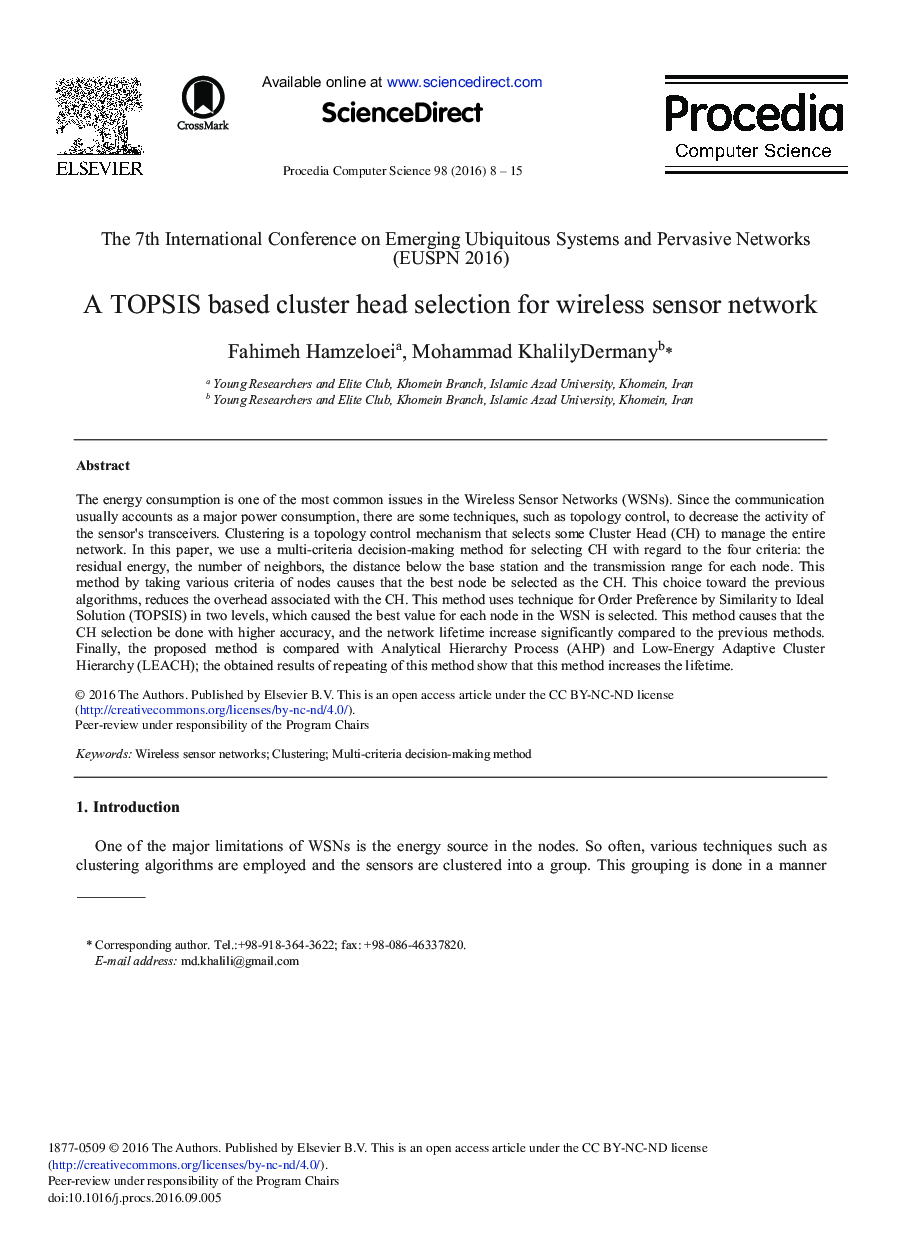| Article ID | Journal | Published Year | Pages | File Type |
|---|---|---|---|---|
| 4962007 | Procedia Computer Science | 2016 | 8 Pages |
The energy consumption is one of the most common issues in the Wireless Sensor Networks (WSNs). Since the communication usually accounts as a major power consumption, there are some techniques, such as topology control, to decrease the activity of the sensor's transceivers. Clustering is a topology control mechanism that selects some Cluster Head (CH) to manage the entire network. In this paper, we use a multi-criteria decision-making method for selecting CH with regard to the four criteria: the residual energy, the number of neighbors, the distance below the base station and the transmission range for each node. This method by taking various criteria of nodes causes that the best node be selected as the CH. This choice toward the previous algorithms, reduces the overhead associated with the CH. This method uses technique for Order Preference by Similarity to Ideal Solution (TOPSIS) in two levels, which caused the best value for each node in the WSN is selected. This method causes that the CH selection be done with higher accuracy, and the network lifetime increase significantly compared to the previous methods. Finally, the proposed method is compared with Analytical Hierarchy Process (AHP) and Low-Energy Adaptive Cluster Hierarchy (LEACH); the obtained results of repeating of this method show that this method increases the lifetime.
